Lots of Diddley-based tunes are obvious, like “Willy and the Hand Jive” and Bo’s own “Who Do You Love?” But you may not realize just how many songs have been fueled by that distinctive beat. No rocker can resist it! Here’s a collection of my favorite Bo Babies. Turn your speakers up loud and go crazy, man, crazy!
Here’s the original, from the master himself, born Ellas Otha Bates on December 30, 1928. He entered rock heaven on June 2, 2008. Hundreds paid tribute to him upon his passing: from the U.S. President and House of Representative members, to countless rock and R&B giants. The University of Florida posthumously awarded Bo a Doctor of Fine Arts degree, and a Voice of America radio service declared that “his influence was so widespread that it is hard to imagine what rock and roll would have sounded like without him.”
Buddy Holly wrote and recorded “Not Fade Away,” but there’s absolutely no doubt that The Stones produced the definitive version. Here’s young Mick, shakin’ his money-maker on The Mike Douglas show in 1964. And the late, great Brian Jones plays a mean blues harp.
Here’s my favorite Who song, “Magic Bus.” Betcha didn’t realize this was born of Bo!
Check out this great clip of Bruce honoring Bo with his Diddley-inspired “She’s the One.
Even punk rockers loved Bo. Here’s The Clash, performing one of my favorites, “Rudie Can’t Fail.” For the record, the word “rudie” comes from Jamaican street culture, and quite literally refers to rude (bad) boys. Brit punks of the 1970s quickly co-opted the name!
The Irish know a good beat when they hear one. “Mystic Eyes,” by Northern Ireland’s Them, is a raucous Diddley-based R&B number. Van Morrison wrote it, and belts it out here in this 1965 performance. Have you ever seen Van this young?
From Belfast to Dublin, here’s U2 with “Desire.” You can count on Bono for descriptive lyrics: She’s the dollars; she’s my protection. Yeah she’s a promise in the year of election. Oh sister, I can’t let you go. Like a preacher stealing hearts at a traveling show.
David Bowie’s “Panic in Detroit” is one of my favorite Diddley-inspired numbers:
Here’s a metal version of Bo’s beat from Guns N’Roses: “Mr. Brownstone.” Slash, you do Bo proud!
Oh, Chrissie…how do I love thee? Let me count the ways. Here’s the queen of the Pretenders with “Break up the Concrete.”
We’ll end with Bo in 1989, making some heavy thunder with his trademark rectangular guitar.
Now, doesn’t this trip down Bo Boulevard just make your ENTIRE day? If these rhythms don’t inspire you to move your feet, shake your hips, bop your head, or – at the very least – tap your fingers, then honey, methinks you’re dead.
© Dana Spiardi, March 2, 2013
]]>
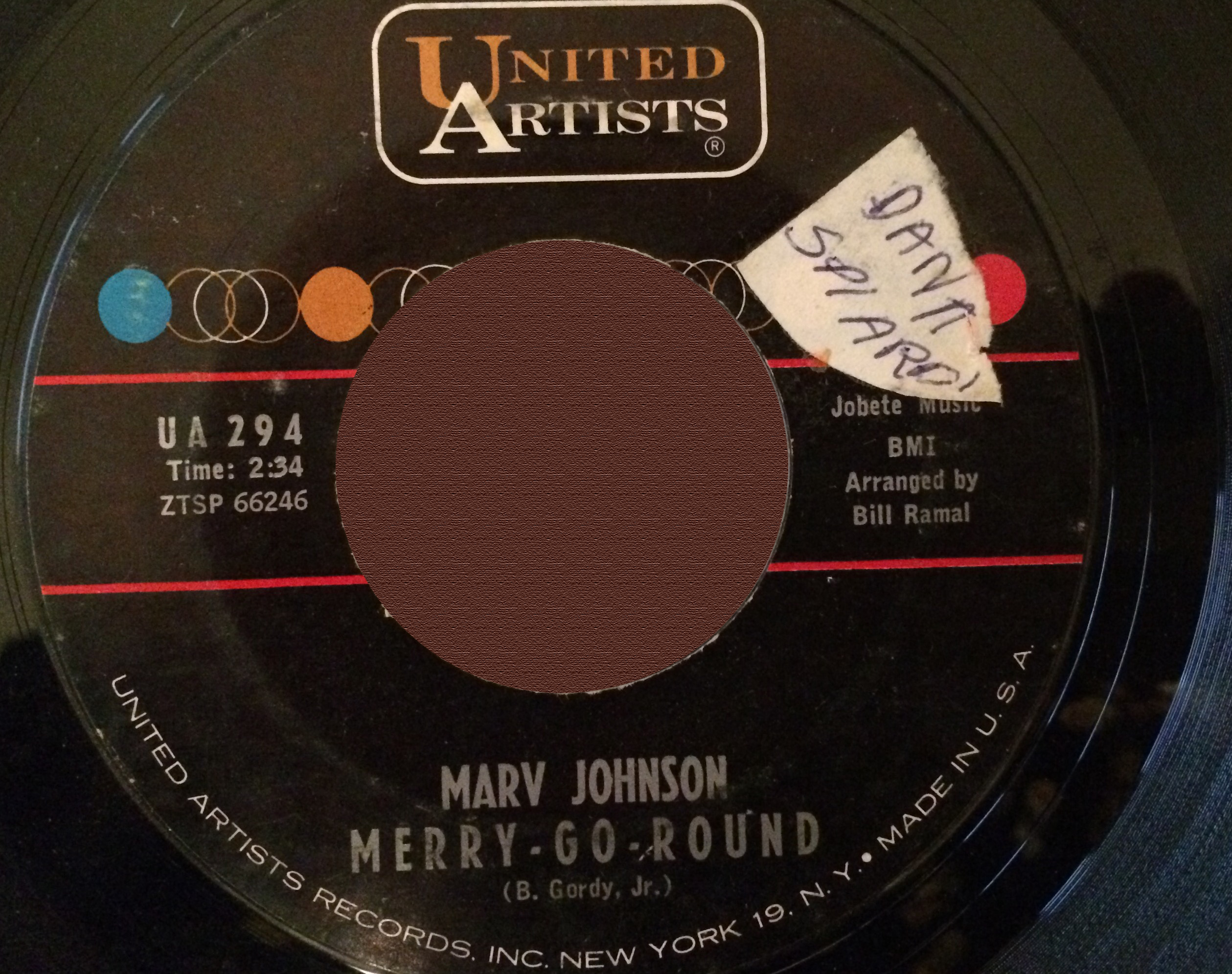 In the late 1950s, up-and-coming music mogul Berry Gordy was on the verge of forming his new Tamla record label when he discovered Marv performing at a carnival. Impressed with the young man’s talents as a singer, songwriter and pianist, he signed Johnson, whose May 1959 hit “Come to Me” became Tamla Records’ first single.
In the late 1950s, up-and-coming music mogul Berry Gordy was on the verge of forming his new Tamla record label when he discovered Marv performing at a carnival. Impressed with the young man’s talents as a singer, songwriter and pianist, he signed Johnson, whose May 1959 hit “Come to Me” became Tamla Records’ first single.
Tamla was incorporated as “Motown Record Corporation” on April 14, 1960.
Between 1959 and 1961, Marv issued nine Billboard Hot 100 singles including two Top 10s. He and Gordy co-wrote four hit songs. The talented singer died of a stroke on May 16, 1993.
Thanks, Ruth M., wherever you are. You turned me on to some great music with those records of yours! Now, here’s “Merry Go Round.”
© Dana Spiardi, Oct 15, 2014
]]>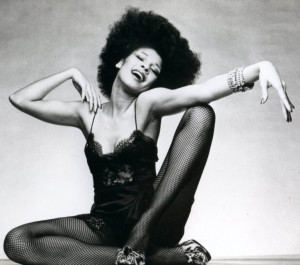 Betty Mabry was born in 1945 and was raised in the working class Homestead neighborhood of Pittsburgh. She grew up listening to her grandmother’s vast blues collection. At the age of 16, she left to pursue acting in New York City, enrolling in the Fashion Institute of Technology. She hung out in Greenwich Village, lived a Bohemian lifestyle, and mingled with a multiracial, artsy kind of crowd. Betty exhibited some talent for songwriting – penning a song for the Chambers Brothers on a successful 1967 release – but kept modeling until boredom set in.
Betty Mabry was born in 1945 and was raised in the working class Homestead neighborhood of Pittsburgh. She grew up listening to her grandmother’s vast blues collection. At the age of 16, she left to pursue acting in New York City, enrolling in the Fashion Institute of Technology. She hung out in Greenwich Village, lived a Bohemian lifestyle, and mingled with a multiracial, artsy kind of crowd. Betty exhibited some talent for songwriting – penning a song for the Chambers Brothers on a successful 1967 release – but kept modeling until boredom set in.
That same year she met Miles Davis. They married in 1968. There was a big age difference, and they divorced quickly. But during their short time together, the young Betty Davis exposed her husband to the rock/funk scene and the music of Sly Stone and Jimi Hendrix. Miles later credited Betty with planting the seeds of fusion in his music. His 1970 “Bitches Brew” LP is considered one of the most significantly groundbreaking albums of all time. Contributing musicians included Chick Corea, John McLaughlin and Wayne Shorter, all of whom moved on as disciples of this movement to form the groups listed earlier.
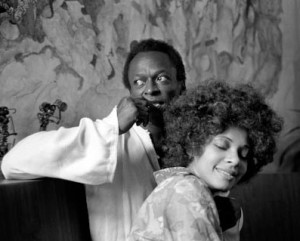 Betty Davis’s story did not end there. She moved to the U.K. to model, then came back to the States with a plan to collaborate with Carlos Santana. She recorded three albums with The Family Stone’s Larry Graham and Santana’s Neal Schon and Gregg Errico, but none made a commercial impact at the time, probably due to their brashness and overt sexuality. They’ve since become underground favorites, and recent re-releases have brought some much-deserved attention to Betty’s work. I play her often on Saturdays.
Betty Davis’s story did not end there. She moved to the U.K. to model, then came back to the States with a plan to collaborate with Carlos Santana. She recorded three albums with The Family Stone’s Larry Graham and Santana’s Neal Schon and Gregg Errico, but none made a commercial impact at the time, probably due to their brashness and overt sexuality. They’ve since become underground favorites, and recent re-releases have brought some much-deserved attention to Betty’s work. I play her often on Saturdays.
It had long been my desire to interview Betty Davis for The Soul Show. Sadly, Soul Show listeners who grew up with her have informed me that she is suffering severely from dementia. So, this is an important reminder for all you music lovers: come out and witness your remaining heroes for the first time or one more time, then meet them at the CD table after the show and offer a warm handshake or hug…and say “thank you.”
Here’s Betty – a sassy Nasty Girl:
Here’s “Miles Runs the Voodoo Down,” from his classic “Bitches Brew” LP:
 © Mike Canton
© Mike Canton
Host & Producer, The Soul Show, WYEP 91.3fm
Streaming worldwide at www.wyep.org
Twitter: soulshowmike
Facebook: soulshowmike
]]>
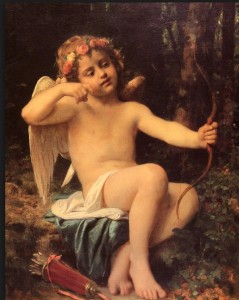 The record’s producers originally asked Sam to compose the song for a long-forgotten female singer to release, but they came to their senses when they heard Cooke croon the tune. It had “hit” written all over it. Released on May 16, 1961, it reached #7 on the Billboard Hot 100 and charted well in England, too. The song inspired a lot of young British singers, notably Rod Stewart, to hone their singing chops.
The record’s producers originally asked Sam to compose the song for a long-forgotten female singer to release, but they came to their senses when they heard Cooke croon the tune. It had “hit” written all over it. Released on May 16, 1961, it reached #7 on the Billboard Hot 100 and charted well in England, too. The song inspired a lot of young British singers, notably Rod Stewart, to hone their singing chops.
Many people have covered this famous song. None can match the poignant sense of desperation that Sam’s flawless voice evokes. But here are a few stand-outs that I personally like.
Check out the Czech! Singer Pavel Bobek delivers a song to the music of “Cupid.” It’s a reggae cut called “Úsvit,” which means dawn.
Gram Parker’s version is a very close interpretation of Sam’s original.
And I can’t forget the late, great Amy Winehouse, one of my favorite artists. She, too, delivers a reggae version. I think she was pleading for something that even Cupid couldn’t provide.
Finally, here’s beautiful Sam, singing “Cupid” live at the Harlem Square Club in 1963.
© Dana Spiardi, Feb 14, 2015
]]>
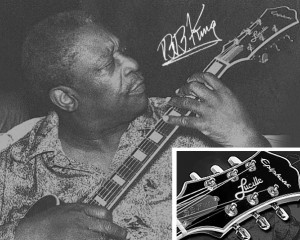 First, there’s the case of blues legend B.B. King and his girl Lucille. One night in 1949 he was playing at a club in Twist, Arkansas. Two men fighting over a woman kicked over a barrel half filled with kerosene, setting the room on fire. The club was evacuated, and once outside, B.B. realized that his $30 Gibson guitar was still in the building. He quickly ran into the flaming club to retrieve it. Later, he learned that the two men were arguing over a woman named Lucille. Several people died in the blaze, but B.B. and his guitar made it out safely.
First, there’s the case of blues legend B.B. King and his girl Lucille. One night in 1949 he was playing at a club in Twist, Arkansas. Two men fighting over a woman kicked over a barrel half filled with kerosene, setting the room on fire. The club was evacuated, and once outside, B.B. realized that his $30 Gibson guitar was still in the building. He quickly ran into the flaming club to retrieve it. Later, he learned that the two men were arguing over a woman named Lucille. Several people died in the blaze, but B.B. and his guitar made it out safely.
He named that instrument, and all that followed – including various Gibsons and Telecasters – Lucille, in gratitude for his survival. In 1980, Gibson began manufacturing the B.B. King signature “Lucille” model.
Albert King was a giant of a man, musically and physically. When the 6’4″ left-handed bluesman released his first record in 1953, newspapers began calling him “B. B. King’s brother.” This inspired the man born Albert King Nelson to drop his surname, sometimes referring to himself as B.B., for “Blues Boy.” Is it any wonder he named his guitar Lucy, in honor of his idol’s Lucille?
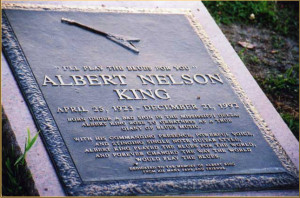 Lucy was a 1958 Gibson Korina Flying V guitar, and Mr. King is considered its master player. In fact, he’s so closely associated with the instrument that his tombstone in Arkansas is engraved with an image of a Flying V. The now-deceased musical pioneer is considered one of the “Three Kings of the Blues Guitar” (along with B.B. King and Freddie King).
Lucy was a 1958 Gibson Korina Flying V guitar, and Mr. King is considered its master player. In fact, he’s so closely associated with the instrument that his tombstone in Arkansas is engraved with an image of a Flying V. The now-deceased musical pioneer is considered one of the “Three Kings of the Blues Guitar” (along with B.B. King and Freddie King).
Dallas-born blues rock phenomenon Stevie Ray Vaughan began playing guitar at age 7. He died in 1990 at age 35 in a helicopter crash, but during his short life he produced a body of work that was virtually unparalleled. Allmusic‘s Stephen Thomas Erlewine described Stevie Ray’s playing as “a uniquely eclectic and fiery style that sounded like no other guitarist, regardless of genre.”
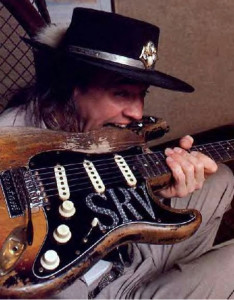 Stevie Ray called his favorite guitar – a 1963 Fender Stratocaster – Number One, but it was also known as his “First Wife” because it was his constant companion. He named his second Strat after his wife Lenny. But he treasured that First Wife most of all. He used it throughout his entire career, playing it with such intensity that its beautiful body was battered and bruised. Love hurts, as they say.
Stevie Ray called his favorite guitar – a 1963 Fender Stratocaster – Number One, but it was also known as his “First Wife” because it was his constant companion. He named his second Strat after his wife Lenny. But he treasured that First Wife most of all. He used it throughout his entire career, playing it with such intensity that its beautiful body was battered and bruised. Love hurts, as they say.
Legendary musicians loving legendary guitars. Ah, doesn’t that just tug at your heartstrings!
Here are Albert King and Stevie Ray paying homage to Albert’s guitar with “I Love Lucy.”
© Dana Spiardi, Feb 5, 2014
]]>